Abstract
The in vitro activity of ciprofloxacin, a quinolone-carboxylic acid derivative, was compared with those of norfloxacin, cefotaxime, cephalexin, ceftazidime, moxalactam, amoxicillin, and methicillin and other agents, as appropriate. The MICs of ciprofloxacin for 90% of members of the family Enterobacteriaceae and for Pseudomonas aeruginosa, Neisseria spp., and Bacteroides fragilis were between 0.005 and 0.8 micrograms/ml, whereas streptococci and staphylococci were all inhibited by less than or equal to 6.3 micrograms/ml. Ciprofloxacin was 4- to 32-fold more active than norfloxacin and inhibited gentamicin-, ameikacin-, cefotaxime-, and moxalactam-resistant members of the family Enterobacteriaceae and P. aeruginosa and methicillin-resistant Staphylococcus aureus. The activity of ciprofloxacin was not affected by serum but decreased in the presence of acid urine. The frequency of resistance to ciprofloxacin was between 10(-7) and 10(-9).
Full text
PDF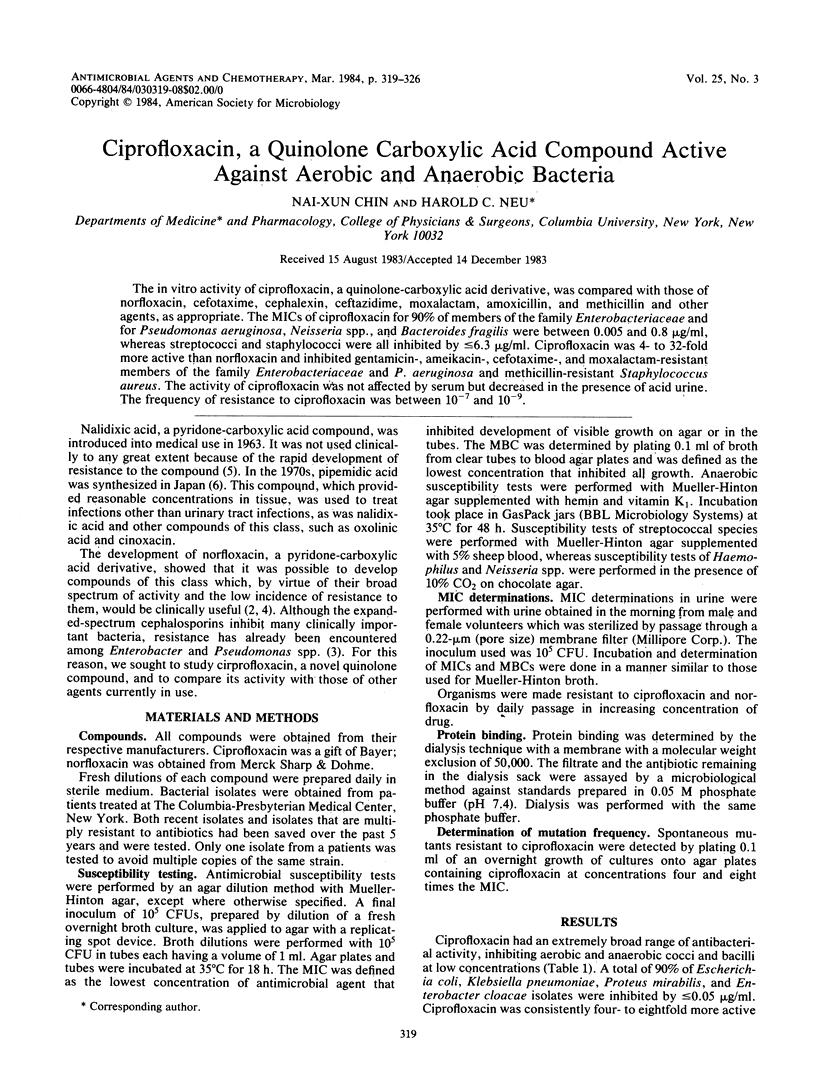
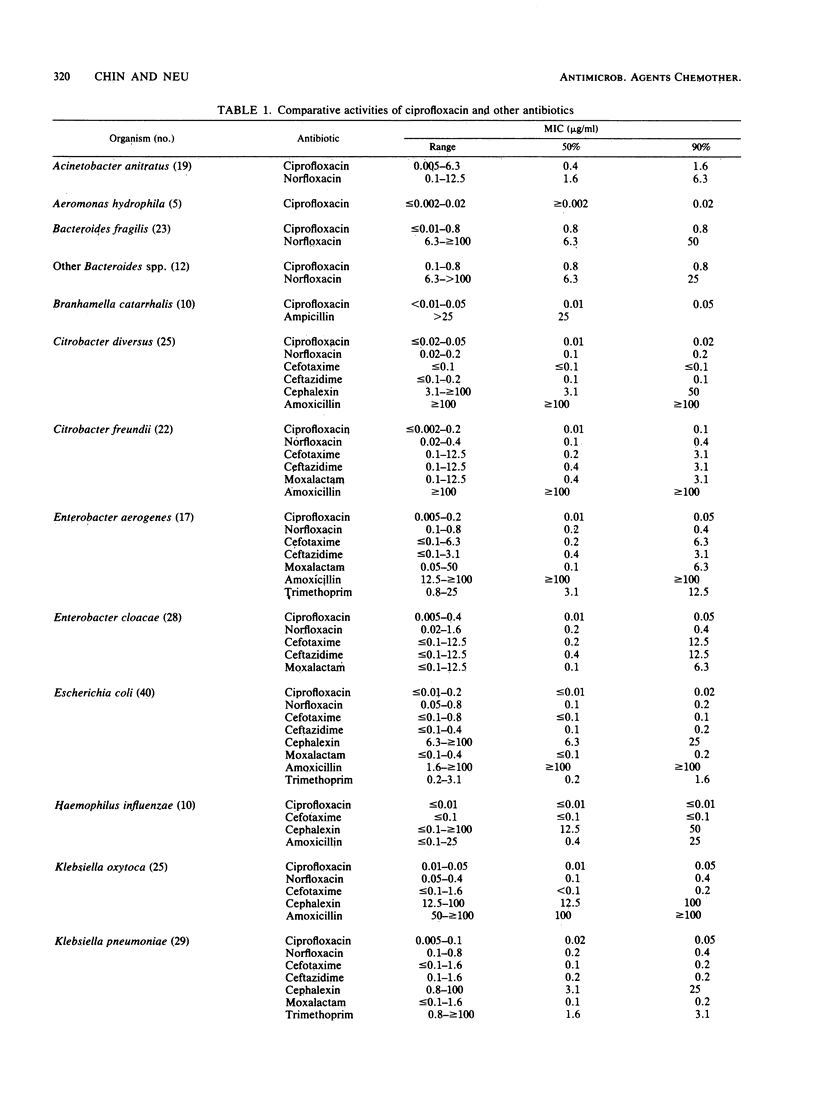
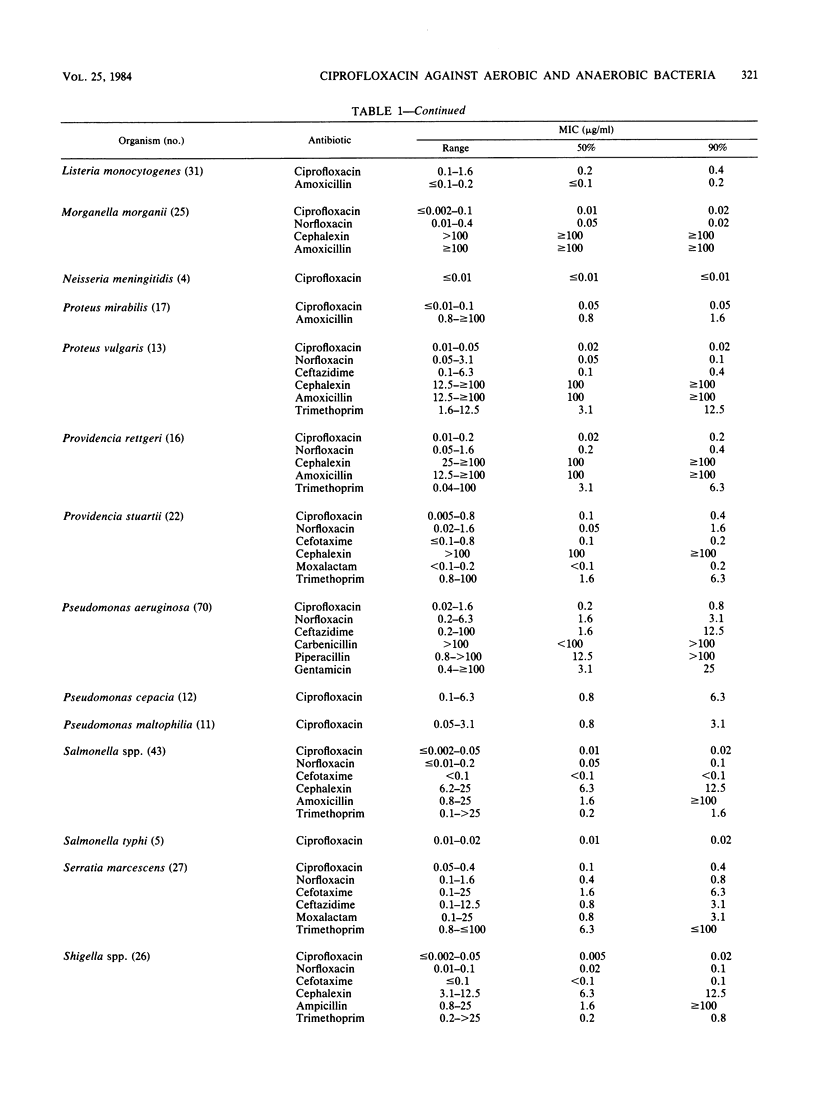
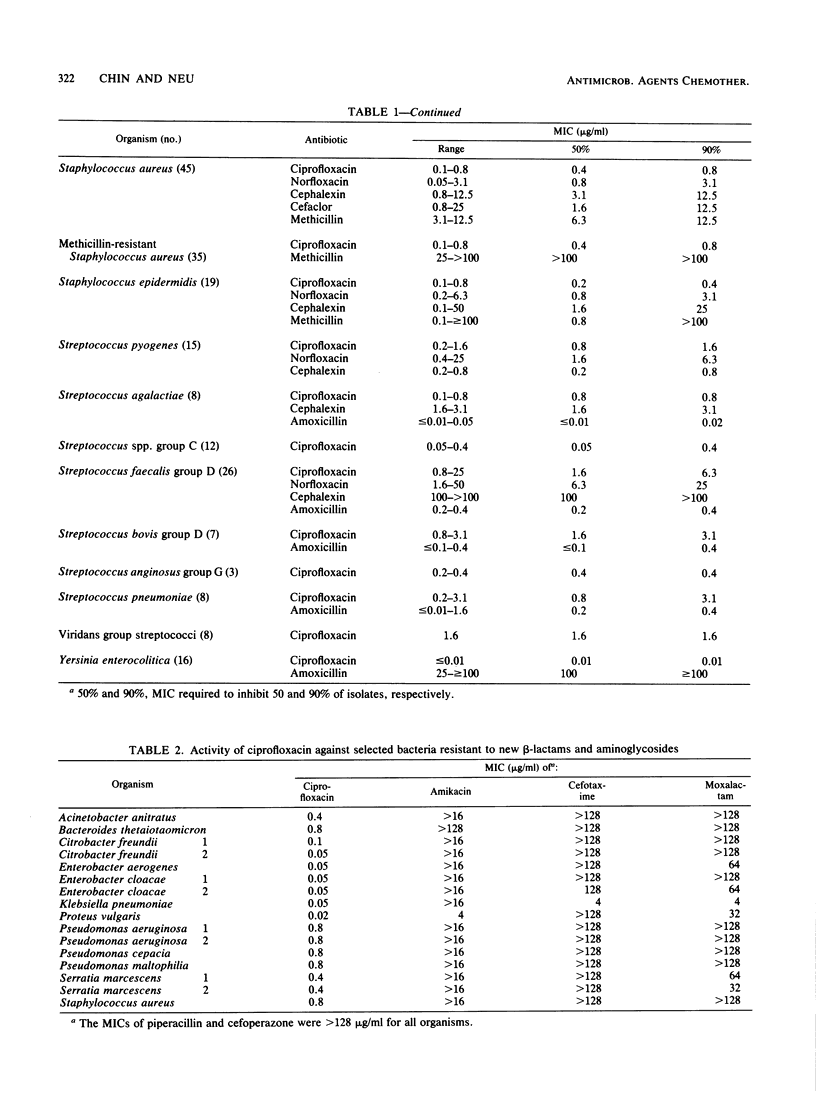
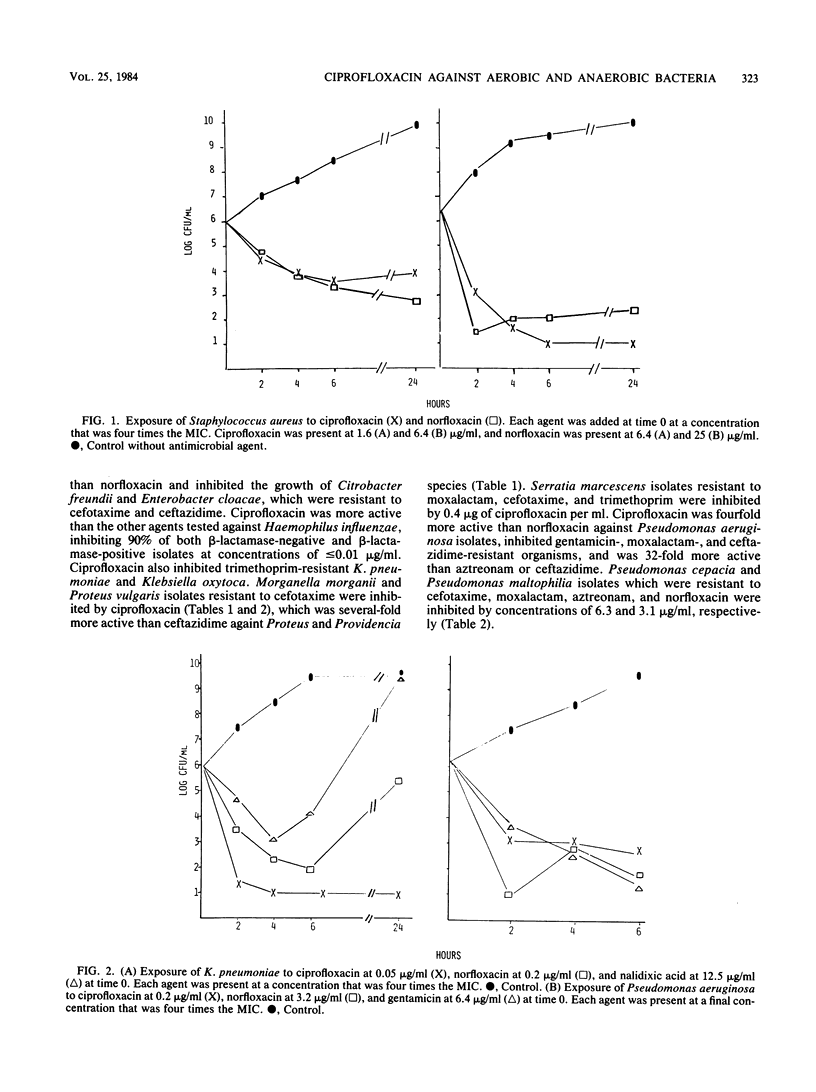
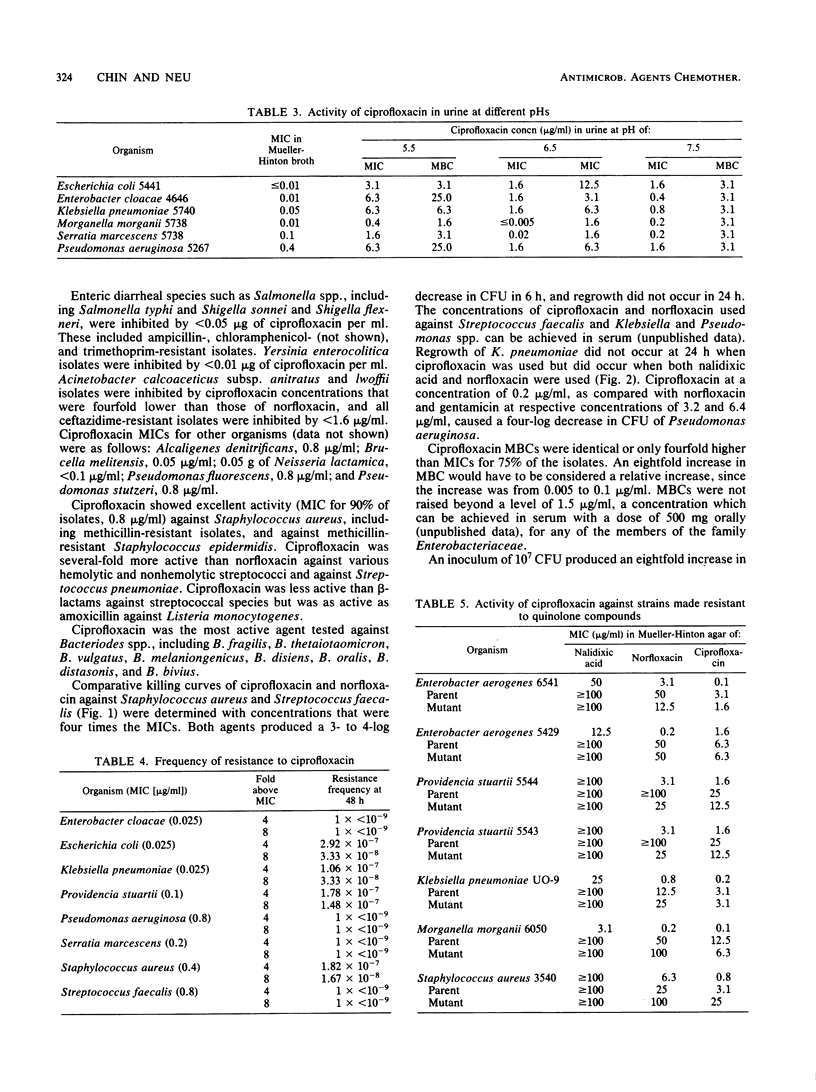
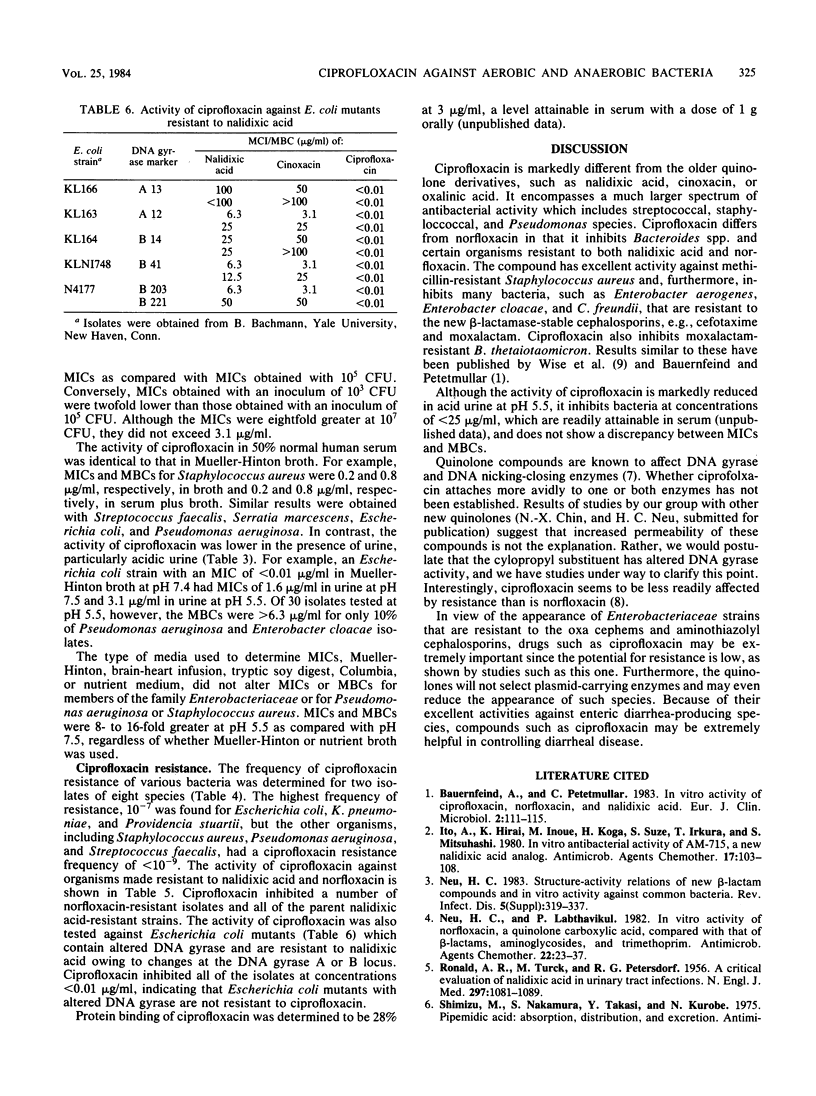
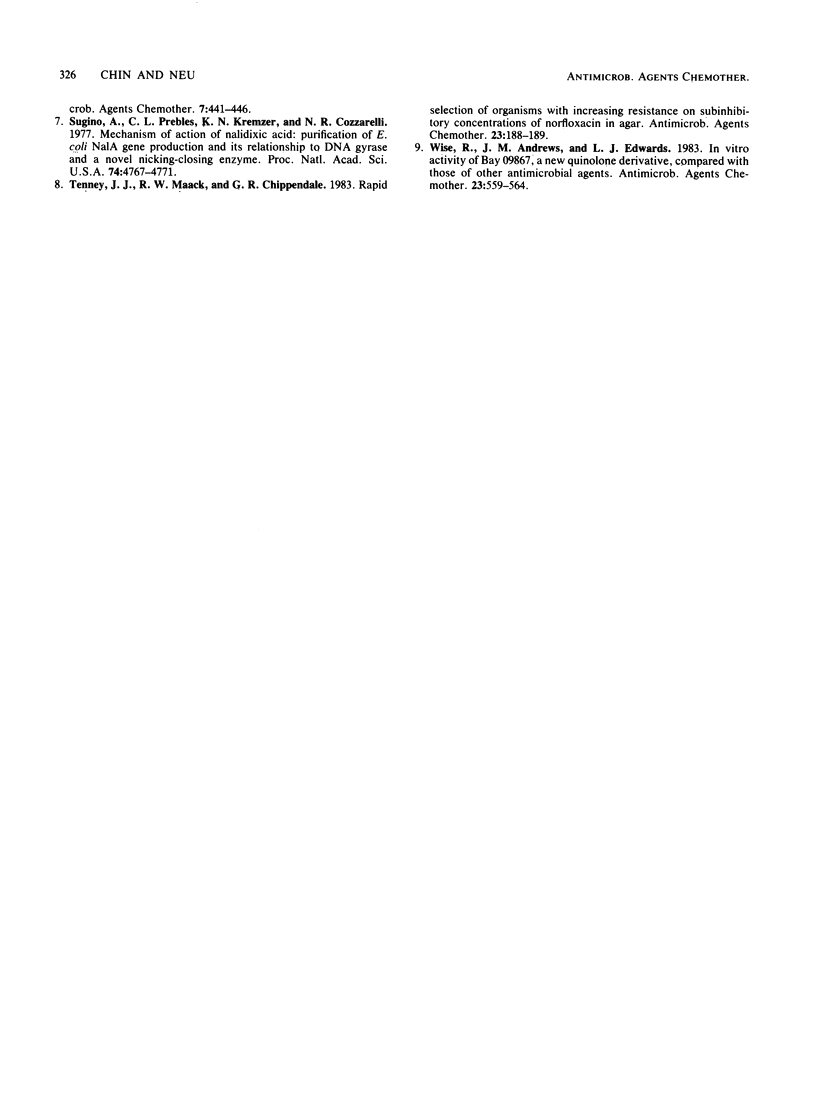
Selected References
These references are in PubMed. This may not be the complete list of references from this article.
- Bauernfeind A., Petermüller C. In vitro activity of ciprofloxacin, norfloxacin and nalidixic acid. Eur J Clin Microbiol. 1983 Apr;2(2):111–115. doi: 10.1007/BF02001575. [DOI] [PubMed] [Google Scholar]
- Ito A., Hirai K., Inoue M., Koga H., Suzue S., Irikura T., Mitsuhashi S. In vitro antibacterial activity of AM-715, a new nalidixic acid analog. Antimicrob Agents Chemother. 1980 Feb;17(2):103–108. doi: 10.1128/aac.17.2.103. [DOI] [PMC free article] [PubMed] [Google Scholar]
- Neu H. C., Labthavikul P. In vitro activity of norfloxacin, a quinolinecarboxylic acid, compared with that of beta-lactams, aminoglycosides, and trimethoprim. Antimicrob Agents Chemother. 1982 Jul;22(1):23–27. doi: 10.1128/aac.22.1.23. [DOI] [PMC free article] [PubMed] [Google Scholar]
- Sugino A., Peebles C. L., Kreuzer K. N., Cozzarelli N. R. Mechanism of action of nalidixic acid: purification of Escherichia coli nalA gene product and its relationship to DNA gyrase and a novel nicking-closing enzyme. Proc Natl Acad Sci U S A. 1977 Nov;74(11):4767–4771. doi: 10.1073/pnas.74.11.4767. [DOI] [PMC free article] [PubMed] [Google Scholar]
- Tenney J. H., Maack R. W., Chippendale G. R. Rapid selection of organisms with increasing resistance on subinhibitory concentrations of norfloxacin in agar. Antimicrob Agents Chemother. 1983 Jan;23(1):188–189. doi: 10.1128/aac.23.1.188. [DOI] [PMC free article] [PubMed] [Google Scholar]
- Wise R., Andrews J. M., Edwards L. J. In vitro activity of Bay 09867, a new quinoline derivative, compared with those of other antimicrobial agents. Antimicrob Agents Chemother. 1983 Apr;23(4):559–564. doi: 10.1128/aac.23.4.559. [DOI] [PMC free article] [PubMed] [Google Scholar]


